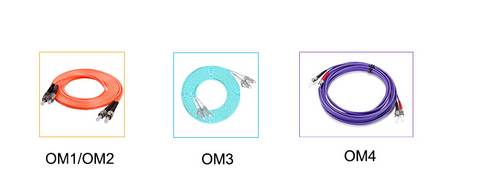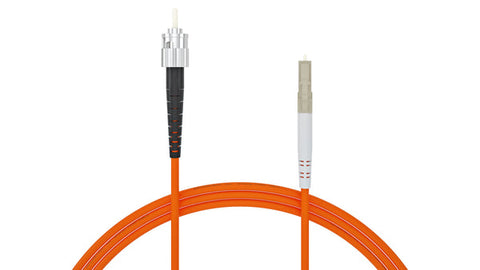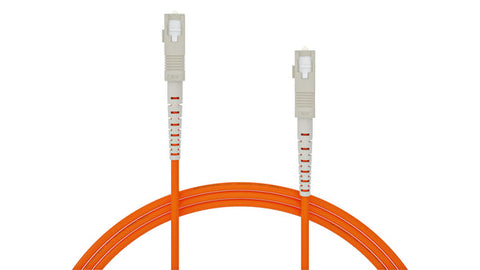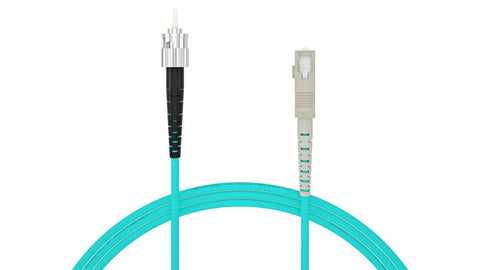As we all know, "OM" stand for optical multi-mode; that is, optical mode, is a standard for multimode fibers to express fiber grades. The bandwidth and maximum distance of different levels of transmission are different. But there are often friends who have doubts about the difference between the fiber jumpers OM1, OM2, OM3, and OM4. Let the editor explain the fiber jumpers OM1, OM2. The difference between OM3 and OM4.

1.Parameter:
(1) OM1 refers to 50um or 62.5um core diameter multimode fiber with 850/1300nm full injection bandwidth over 200/500MHz.km;
(2) (2) OM2 refers to 50um or 62.5um core diameter multimode fiber with 850/1300nm full injection bandwidth above 500/500MHz.km;
(3) OM3 is a 50um core diameter multimode fiber optimized by 850nm laser. In 10Gb/s Ethernet using 850nm VCSEL, the fiber transmission distance can reach 300m;
(4) OM4 is an upgraded version of multimode optical OM3 fiber, and the optical fiber transmission distance can reach 550m.

2.Design comparison of OM1, OM2, OM3 and OM4 fibers
(1) The traditional OM1 and OM2 multimode fibers are based on LED (Light Emitting Diode) light sources regarding standard and design, while OM3 and OM4 are optimized on the basis of OM2, making them suitable for light sources at the same time For the transmission of LD (Laser Diode laser diode);
(2) Compared with OM1 and OM2, OM3 has higher transmission rate and bandwidth, so it is called optimized multimode fiber or 10 Gigabit multimode fiber;
(3) OM4 is re-optimized based on OM3 and has better performance.
3.Transfer Speed and Broadband:
The transmission speed and bandwidth of the OM fiber jumper increases step by step, OM1<OM2<OM3<OM4.

4.Different uses:
OM1 and OM2 have been widely deployed in building applications for many years, supporting Ethernet transmission up to 1GB;
OM3 and OM4 fiber optic cables are usually used in the wiring environment in the data center, supporting the transmission of 10G and even 40/100G high-speed Ethernet networks.
5.Functions and Features:
(1) OM1: The core diameter and numerical aperture are large, and it has strong light-gathering ability and bending resistance;

(2) OM2: The core diameter and numerical aperture are relatively small, which effectively reduces the modal dispersion of the multimode fiber, significantly increases the bandwidth, and reduces the production cost by 1/3;

(3) OM3: Using flame-retardant outer skin can prevent the spread of flame. Prevent the emission of smoke, acid gas, and poisonous gas, etc.. and meet the needs of 10 Gb/s transmission rate;

(4) OM4: Developed for VSCEL laser transmission, its effective bandwidth is more than double that of OM3.


